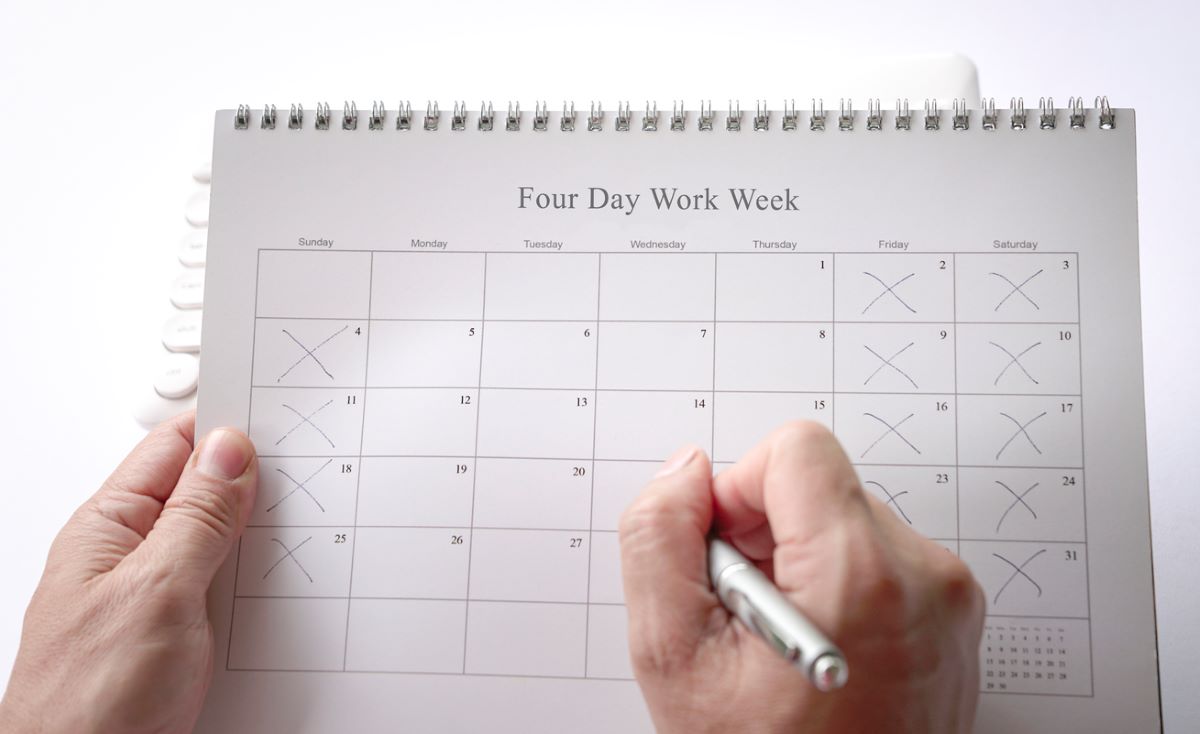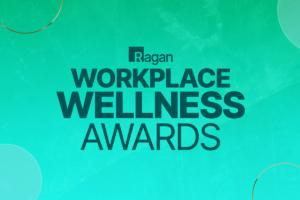Curating the week in wellness Jan. 10-14, 2022
Is the four-day workweek simply a hot topic, or is it feasible? Plus how to help young employees stay engaged and ways to avoid the ‘Zoom ceiling.’

Hello, wellness pros!
We have curated a collection of thought-provoking articles, tips and takeaways for the week.
Please get in touch with any ideas, suggestions or feedback on how we can serve you better or cover topics that are top-of-mind at your organization. Email: kaceyl@ragan.com.
1. Are four-day workweeks actually feasible?
Any time a company announces they are shifting to a four-day workweek model it seems to make headlines. Case in point, Mashable reported this week that Panasonic is planning to offer its workers the option of a four-day workweek. While this announcement also states the company is just starting on the implementation path and does not anticipate rolling it out until April 2023 at the earliest, it raises the question of how doable this actually is for companies? How can squeezing 40 hours of work into a 32-hour workweek alleviate employee burnout and not create more?
Executives at eFileCabinet and Bolt shared their respective journeys into the four-day workweek with HR Dive, and both said it starts with research; the companies ran pilot programs. eFileCabinet started by giving its roughly 125 employees one to two Fridays off per month. Similarly, Bolt began piloting a four-day workweek in September and recently made it permanent.
As for how to fit everything into a 32-hour week, executives noted that “presented with a challenge to do the same with less, departments quickly learned what frustrating tasks were wasting time, and how to strategize for the outcomes that really mattered for company success. ‘It reminds me of an onion,’ Michael Plante, chief marketing officer at eFileCabinet said. ‘We got the stuff that was kind of obvious, right before and right after we rolled out the four-day workweek. And then we uncovered…the next layer of productivity gains that we can achieve.”
Workplace Wellness Insider’s sister brand Ragan recently covered the benefits of a four-day workweek.
2. What young employees are “missing” and how to help.
As we approach the two-year mark of the COVID-19 pandemic, it makes sense that disconnect is something many are struggling with. However, CNBC Make It suggests this is especially worrisome for young employees. “Peter Cappelli, a professor at the University of Pennsylvania’s Wharton School of Business, argues that young professionals have less engagement, less commitment to their organization and more social isolation while working remotely, putting them at disadvantage for promotions and other career development opportunities.”
While employers can support their young employees by offering networking and learning opportunities, a solution that the Mental Health Foundation recommends is mentoring. ATD reports that “Mentorship can be an important tool for fostering the kind of human interconnection that promotes employee well-being. This is especially true today, given the challenges that remote and hybrid work environments pose in terms of isolation and extra stress.”
3. Recognizing the “Zoom Ceiling” as a DE&I issue.
Remote work is favored by women and minorities, but there may be career barriers as a result if human resources and leadership are not proactive around creating equal opportunities, reports EBN.
“The Zoom ceiling is akin to the glass ceiling in that it stops people from being able to ascend to higher levels of leadership,” says Dr. Elora Voyles, an industrial organizational psychologist and people scientist at workforce management software company Tinypulse. “And women and minorities are more likely to pick remote jobs, leading to more invisible barriers in their career progression.”
To avoid the “Zoom Ceiling,” managers need to get a full view of remote workers’ performance and contributions. Dr. Voyles tips to do that successfully include:
- Set up clear policies surrounding communication and performance expectations, such as frequent one-on-one meetings with managers and team check-ins.
- Have hybrid teams attend meetings virtually to avoid sidebar conversations and less virtual engagement, creating more equality within meetings.
- Employers need to revise performance evaluation methods to equally assess remote workers.
- To avoid any unfair assumptions, leaders need to continue to articulate policies that increase flexibility for all workers. Doing so, reiterates there isn’t a negative connotation to working remotely.
4. Advice for mentally handling another pandemic winter.
NPR’s Weekend Edition spoke to three mental health professionals about the emotional challenges brought by both the ongoing COVID-19 pandemic and winter season. On Newsweek, Mitchell Demeter, president, Netcoins Inc., shares his “plan to approach work and avoid the winter blues.”
He outlines three ways he plans to help both himself and his employees:
- Set hours—and boundaries—for the virtual office. “A virtual office door can’t be shut, but it can have boundaries. It’s taken more than a year, but I now see the importance of turning off Slack notifications or letting my team know when I am occupied and simply can’t respond to internal communication. Being available to each other is important, but it can’t come at the expense of focus or rest.”
- Making employee self-care in the workplace a priority. “Generally, when we talk about self-care, it’s personal—like taking a bath, talking to a friend or sleeping in. During a global crisis, however, employers must recognize the importance of employee mental wellness and make it a professional priority.”
- Evolve productivity expectations. “Like any employer, I want to avoid productivity decline, but I also recognize, just as working conditions have changed, so should expectations around how much can get done. One of the best ways I’ve learned to support my team is to be intentional about easing their workflow and empowering them to ask for help when needed.”
5. HR departments often bear the burden of COVID-19 response.
None of this is likely news to most of you—just as it wasn’t to those interviewed for The New York Times article, “Your Head of H.R. Is Now Basically the School Nurse.” But it is included here in this round-up as a recognition of the difficult work of the nearly two years of the pandemic. For human resources departments all over to pivot this way while still managing the day-to-day needs of employees at a time when individuals can barely keep up is humbling. Many of Ragan’s Top Women in Wellness and HR honorees were recognized for their efforts to help their companies navigate those shifts, so clearly awards are deserved!
LinkedIn News posted a round-up of posts centered around The Times article. Many shared personal experiences of work during the pandemic, others shared ‘thank you’ messages. So, while there have likely been overwhelming days, weeks and perhaps even months, we see you, HR and wellness pros, and appreciate all your work.
COMMENT
Ragan.com Daily Headlines
RECOMMENDED READING
Tags: COVID-19, employee disconnect, four-day workweek, mental health, mentorship, Performance management






